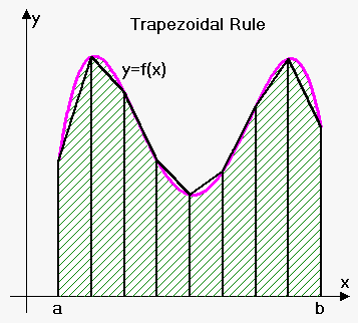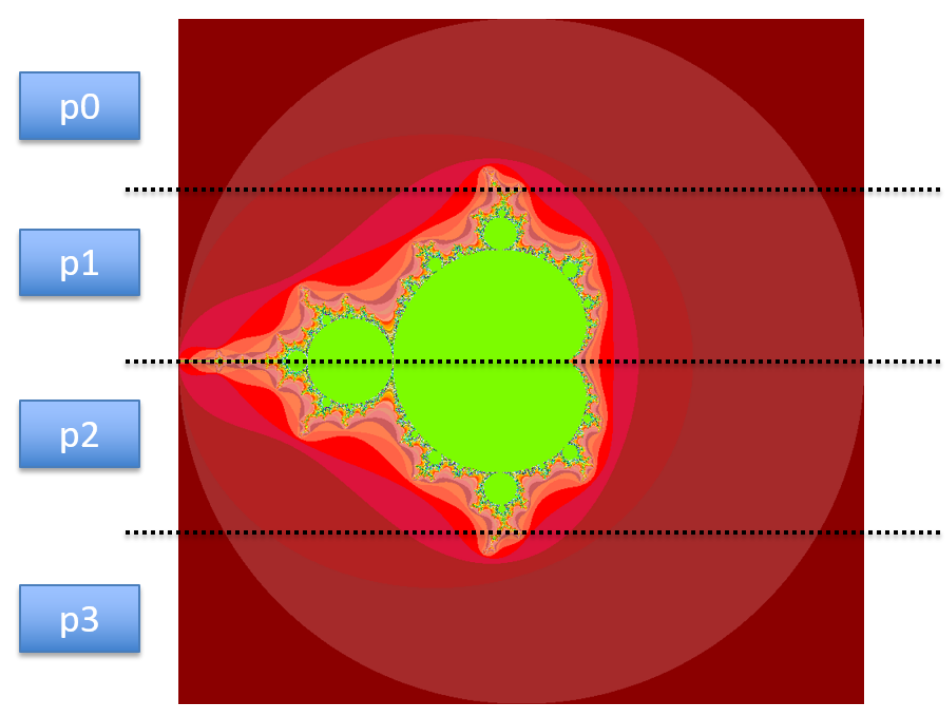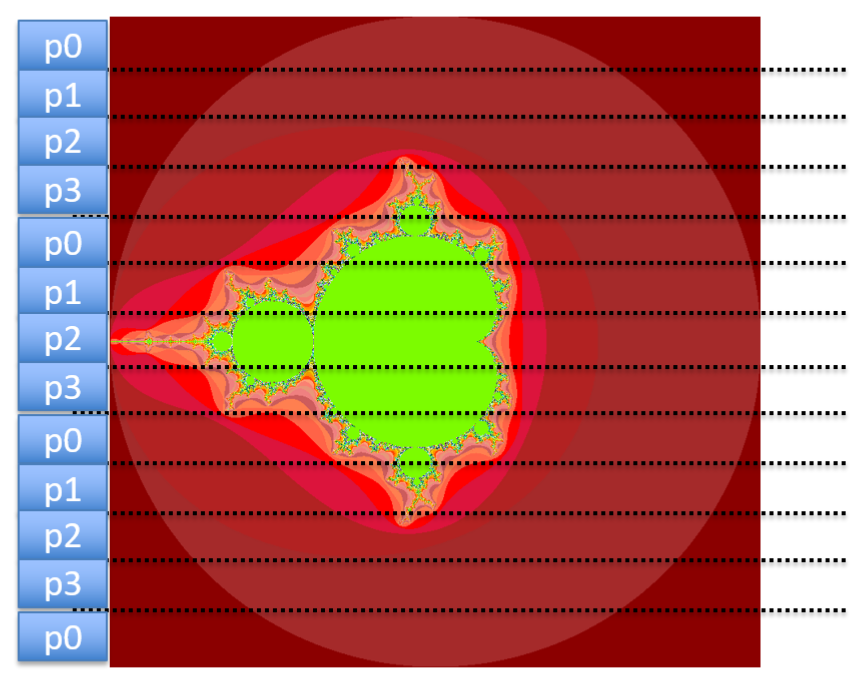MPI: pleasantly parallel and workload allocation
Contents
MPI: pleasantly parallel and workload allocation#
1. Definition#
Embarrassingly/naturally/pleasantly parallel.
A computation that can obviously be divided into a number of completely different parts, each of which can be executed by a separate process.
Each process can do its tasks without any interaction with the other processes, therefore, …
No communication or very little communication among the processes.
2. Example: integral estimation using the trapezoid method#
3. Example: integral estimation using the trapezoid method#
4. Example: integral estimation using the trapezoid method#
5. Example: integral estimation using the trapezoid method#
4 processes:
P0,P1,P2,P3:size= 4N= 8a= 0b= 2The height
hcan be calculated as:h= (b-a) /N= 0.25
The amount of trapezoid per process:
local_n=N/size= 2;
local_a: variable represent the starting point of the local interval for each process. Variablelocal_awill change as processes finish calculating one trapezoid and moving to another.local_aforP0= 0 = 0 + 0 * 2 * 0.25local_aforP1= 0.5 = 0 + 1 * 2 * 0.25local_aforP2= 1 = 0 + 2 * 2 * 0.25local_aforP2= 1.5 = 0 + 3 * 2 * 0.25
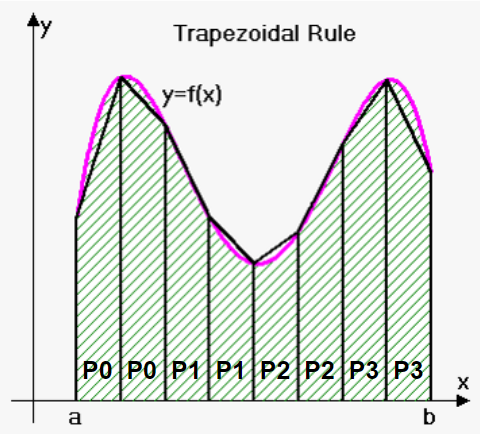
6. Handson: integral estimation using the trapezoid method#
7. Hands-on: static workload assignment#
8. Hands-on: cyclic workload assignment#
9. Hands-on: dynamic workload assignment#
Create a file called
trapezoid_dynamic_.cwith the following contents:
Compile and run
trapezoid_dynamic.c:
$ mpicc -o trapezoid_dynamic trapezoid_dynamic.c
$ mpirun -np 4 ./trapezoid_dynamic 0 1 1000
$ mpirun -np 4 ./trapezoid_dynamic 0 1 1000
$ mpirun -np 4 ./trapezoid_dynamic 0 1 1000
{: .language-bash}
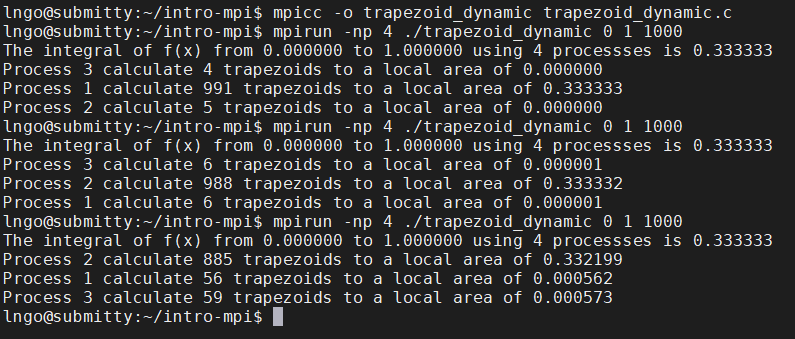
This is called
dynamic workload assignment.



